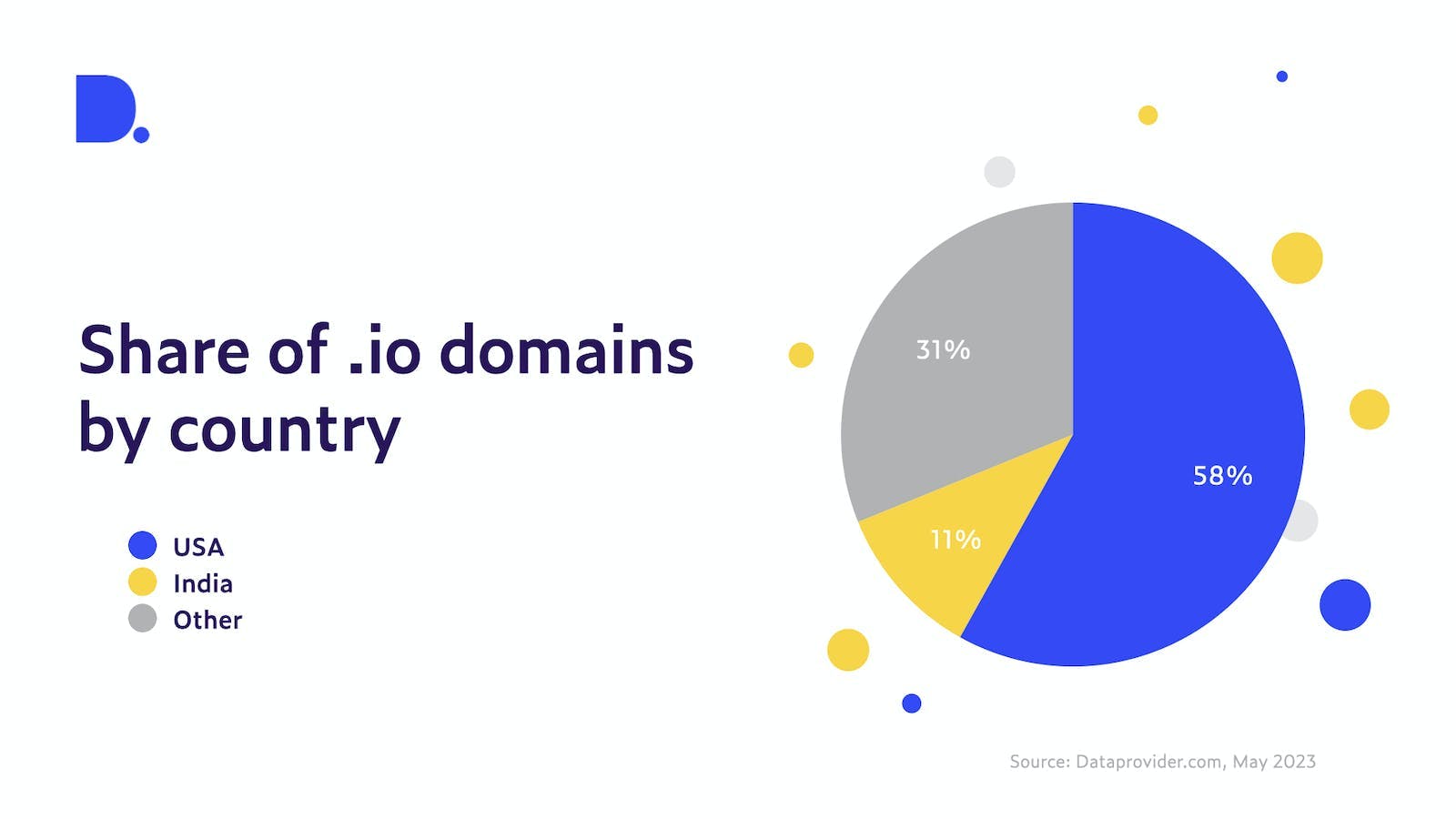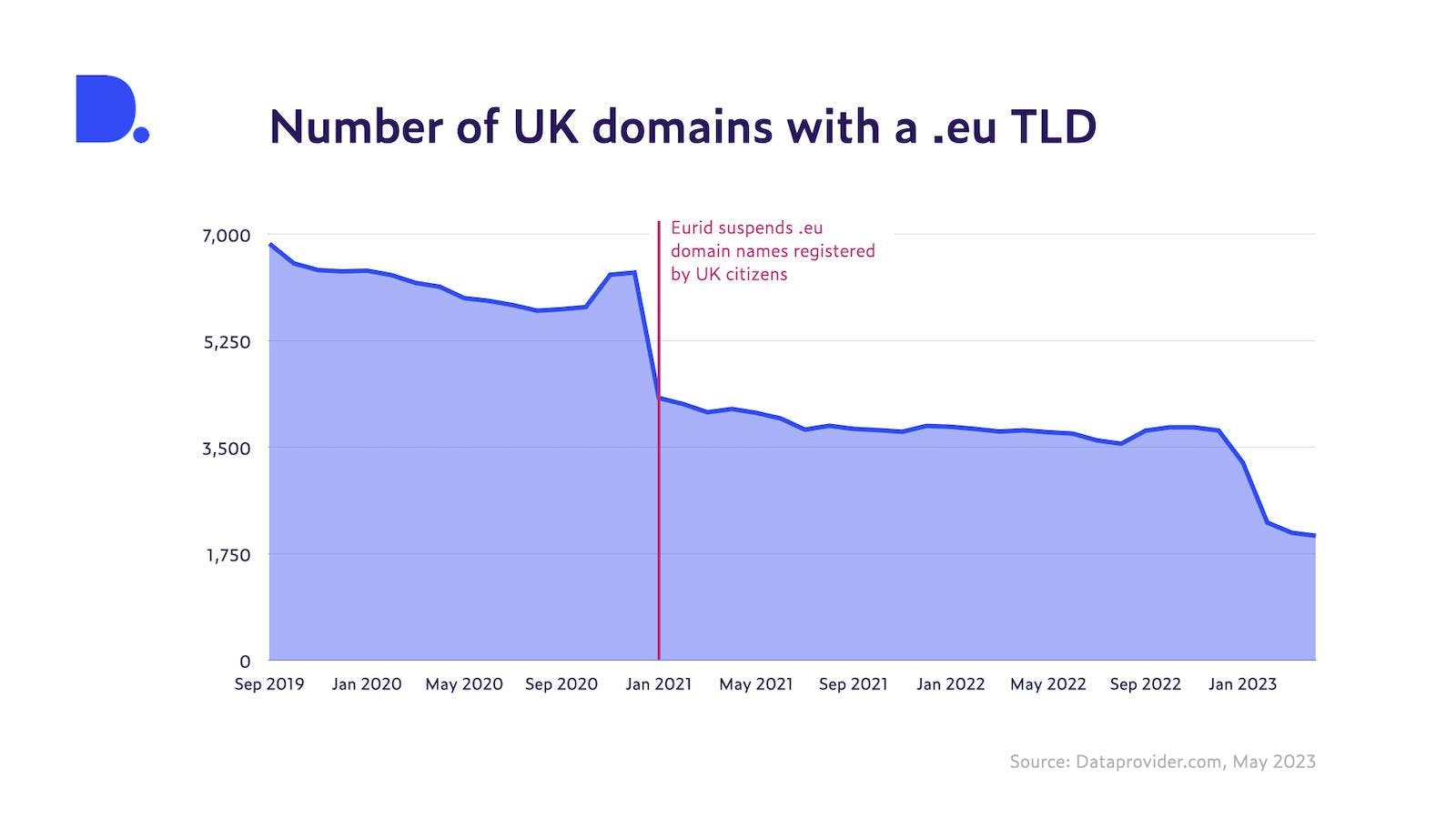When TLDs cease to exist: the uncertain future of .io
- over 2 years ago
- 3 min read
The .io top-level domain is commonly associated with tech startups and companies in the tech industry. However, there is an ongoing controversy surrounding the use of this domain.
The .io top-level domain is commonly associated with tech startups and companies in the tech industry. There are many reasons why tech companies opt for the .io domain, seven of which have been stated in the blog post by InterNetX. However, there is an ongoing controversy surrounding the use of this domain.
The .io domain is actually the country code top-level domain (ccTLD) for the British Indian Ocean Territory (BIOT), a small group of islands in the Indian Ocean. BIOT’s political existence is in question, which brings up a couple of questions about the future of the corresponding .io domain.
The extension is used by many tech companies as I/O stands for input/output. Among the 1,223 TLDs we identify in our data, .io ranks 49th with 221,191 domains that have an active website. Over the past years, .io has seen slow but steady growth. .io has largely been adopted by US domain owners; in fact, we can trace 58% of the active .io domains to the US. The country with the second largest share of .io domains is India (11%). The remaining 31% are globally distributed.

BIOT is a British Overseas Territory consisting of a set of islands in the Indian Ocean known as the Chagos Archipelago. The Mauritian government claimed its sovereignty over the islands, leading to a decision by the United Nations in May 2019 that the islands should be ceded to Mauritius by the United Kingdom. This decision could mean the de jure end of the BIOT.
But what does this mean for the .io domain? If the territory it represents comes to an end, does .io cease to exist? The Internet Corporation for Assigned Names and Numbers (ICANN) oversees these issues, and according to their standardization ISO-3166, the .io extension might cease to exist, much like .cs which was discontinued following the end of Czechoslovakia and was gradually phased out over the course of two years from 1993 to 1995. A more contemporary example would be the fate of the .eu domain in the United Kingdom.

It is possible to see a steady decline from 2021 onwards, as .eu re-registries in the UK were not allowed. This represents an example of how political decisions have an impact on the web. A similar trend could be on the horizon for the .io domains if the decision taken by the UN is implemented.
But what does this mean for the website owners? The potential disappearance of the domain name could mean that many businesses might be forced to find an alternative TLD. This could cost them customers as they might not find a TLD that has the same level of recognition. Website owners could take preemptive measures to ensure a smooth transition, such as investing in 301 redirects and leading the traffic to the new domain.
But there should be no urgency as the fate of the .io is nowhere near to being settled. If the islands are returned by the United Kingdom, there are still many parties that will have a say in the domain’s future, such as the Mauritians, the Chagossians, ICANN and the internet community itself. For example, the .su domain, representing the Soviet Union, still exists today due to the demands of the Russian internet community in the 90’s and despite the removal efforts of ICANN. According to our data, there are currently 34,401 active websites under the .su TLD.
Depending on the course of action taken by the British and the Mauritian governments, .io has an uncertain future. Alongside the domain issue and serious geopolitical and international legal issues surrounding the BIOT and .io dispute, there is also a financial one: what will happen to the revenue generated by the .io domain sales?